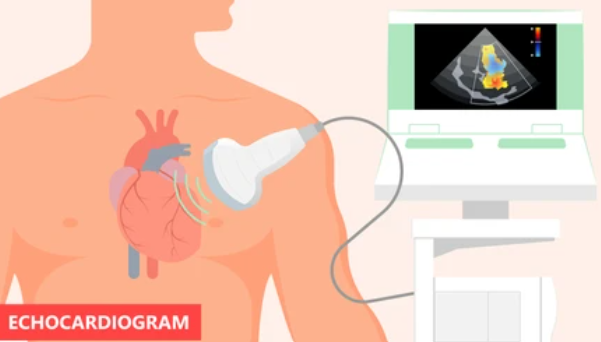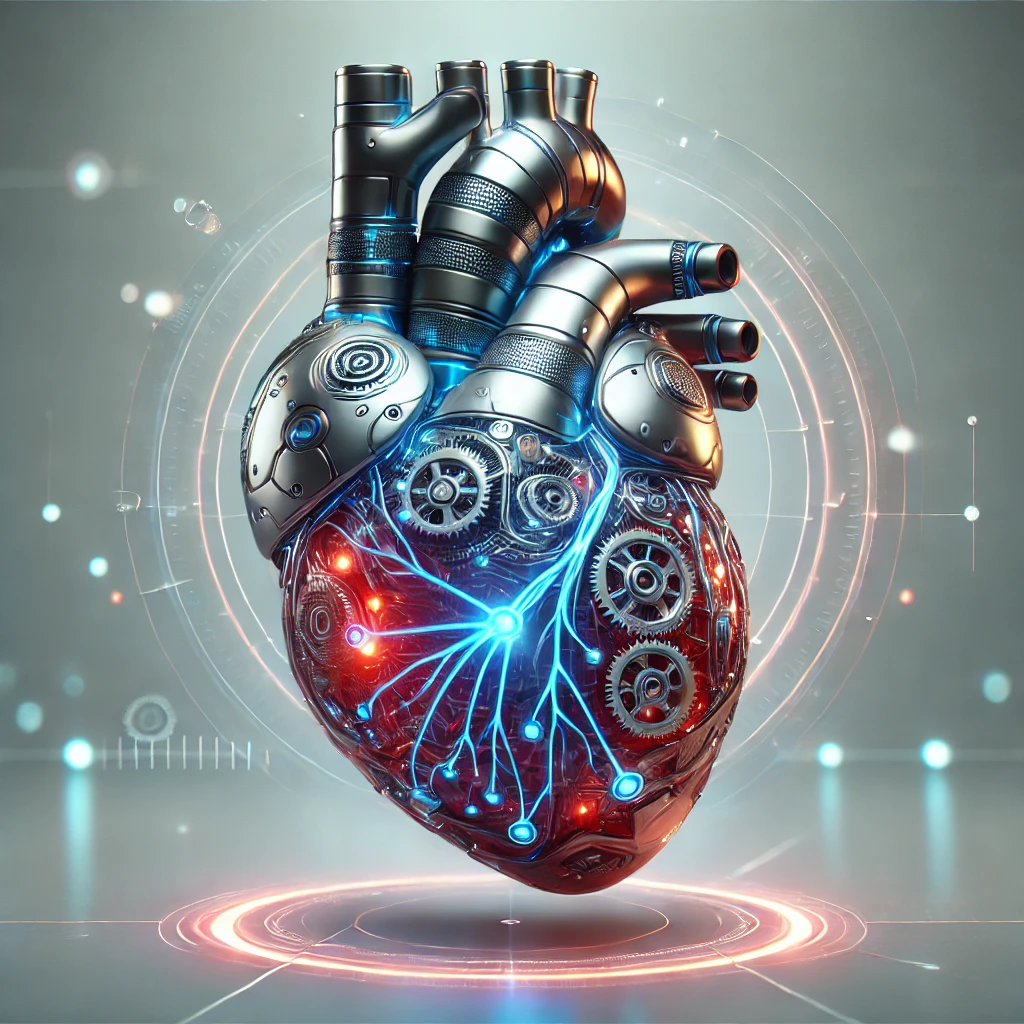Introduction
To begin with, Cardiology is a branch of the medical field that involves treating diseases of the heart and blood vessels (Medical News Today, 2017). In the last few years, cardiology has undergone a fascinating transformation through the high-paced advancements of technology and artificial intelligence (AI). In this article, you’ll discover how these innovations are used to ensure patients receive more effective and personalized treatment plans, as well as the drawbacks that come with them.
The Various Uses of Technology and AI in Cardiology
Modern technology has numerous uses and applications in cardiology; even now, it’s continuing to evolve! The developments of technology and AI are truly endless, nonetheless, a few examples have been listed below:
Intravascular Ultrasound (IVUS)
Beginning with intravascular ultrasound (IVUS), it’s an imaging machine used to produce detailed cross-sectional images from inside the artery by inserting a dedicated catheter. The IVUS will assist the cardiologist in identifying any buildup of plaque, complications regarding previous or future procedures, and a suitable stent size for the patient (National Library of Medicine, 2023). The IVUS has been continuously improving regarding the quality of the images produced (like enhancing resolution) and the data provided by the machine.

Machine Learning (ML) and Deep Learning (DL)
Moreover, the employment of artificial intelligence is showcased through machine learning (ML) and Deep learning (DL). For instance, ML is focused on gathering all possible variables and data that has been presented to it; thus, producing algorithmic results and predictions on the possible outcomes of heart diseases. Additionally, ML can be used to identify the patterns from all the incorporated data so early diagnosis of diseases along with treatment plans can be made with minimal human interference (Journal of Cardiovascular Pharmacology and Therapeutics, 2020).
On the other hand, DL is involved in the analysis of images of the heart, creating an accurate model that integrates input data that it has learned (such as medical history) and sets of augmented data (artificially generated or modified data) to provide effective diagnosis (American Heart Association Journals, 2022).
Echocardiogram (Echo) and Electrocardiogram (EKG or ECG)
Finally, onto the more well-known machines used in cardiology, the echocardiogram (echo) and the electrocardiogram (EKG or ECG). Similarly, both the echo and an ECG inspect the heart however they check for different things and will also result in producing different diagrams (Cleveland Clinic, 2022). This is because the echo is generally checking for any abnormality in the structure and function of the heart by producing various moving images of your heart using ultrasound. On the other hand, the ECG uses electrodes to discover any irregularities in the heartbeat rate or rhythm by checking the heart’s electrical impulses (Nanavati Max Super Specialty Hospital, 2023).
The technology of both the ECG and echo has improved throughout the years. This can be seen through the wearable or portable inventions that will allow for tracking the patient’s heart activity in real-time and come in many forms such as smartwatches, adhesive patches, handheld gadgets, and chest straps (Executive Electrocardiogram Education, n.d.). Thus, leading to more accurate diagnosis of heart conditions that usually go undiagnosed like irregular heartbeats since these devices will allow for continuous monitoring of the heart (Executive Electrocardiogram Education, n.d.).
There have also been advancements in the interpretations of the data provided by the ECG using AI, which will then help in analyzing the information available and discovering any irregularities that normally might have gone unnoticed by doctors (Executive Electrocardiogram Education, n.d.). Meanwhile, echocardiography has progressed into various advanced technologies including color flow, spectral Doppler, and tissue Doppler; these advancements will provide cardiologists with enhanced image resolution, 3-dimensional images, and harmonic imaging (providing images with improved quality) of the cardiac chambers and valves (PubMed Central, 2014).


Why we NEED to Utilize Technology and AI in Cardiology
Although we have seen the different forms of applying technology, we haven’t touched upon the reasons why it’s significant to both cardiologists and cardiology patients. Here are the benefits of utilizing these technologies:
1) Improved Accuracy and Diagnosis
With the use of these technologies and AI, cardiologists are now supplied with accurate analysis and evaluation of possible coronary diseases and outcomes of treatments and procedures (Canadian Journal of Cardiology, 2024). This will allow for more accurate diagnosis of heart diseases as AI is capable of detecting diseases that might have gone unnoticed by cardiologists; hence, patients can begin receiving the correct treatment earlier.
2) Time Efficient
Since accurate diagnosis and treatment can be appointed to the patients earlier, they can receive the right medication that they require and recover faster. The use of technology will also allow for more time-efficient consultations with the cardiologists and so more patients will be able to have their chance with the consultant (Canadian Journal of Cardiology, 2024).
3) Reduced Pressure on Cardiologists
AI can predict the cardiovascular risk of the patient and can then supply the medication and treatment plan that is required which will then lessen the burden on the cardiologists and the healthcare system overall (Canadian Journal of Cardiology, 2024). The use of wearable devices that supply information on the heartbeat rate and rhythm will also provide the opportunity to reduce the number of people with cardiovascular diseases by encouraging healthy behaviors (Canadian Journal of Cardiology, 2024).
The Drawbacks of Using Technology and AI in Cardiovascular Medicine
Now that the advantages of technology and AI have been demonstrated, here are a few downsides of using those advancements:
1) Ethical and Data Privacy Concerns
The idea of using artificial intelligence in cardiology means that there is a risk of the patient’s data getting disclosed and so it can be said that the data is not completely secure (Canadian Journal of Cardiology, 2024).
In Addition, if cardiologists become dependent on the use of AI, they will become more hesitant to make their judgment on the chances of patients developing certain cardiac diseases or the chances of them getting better (Canadian Journal of Cardiology, 2024). Moreover, if the algorithm suggests that a particular procedure should be done and the cardiologist proceeds with the treatment, will the physician be held accountable for any harm that may come to the patient (Canadian Journal of Cardiology, 2024)?
2) Expensive and Inaccessible
While the use of technology will provide cardiologists with accurate analysis and evaluation of data, it is extremely expensive and therefore, not accessible to everyone in need of cardiac treatment. Also, due to the technologies being very high-end equipment, not every hospital can acquire them as each hospital will have limited budgets (PubMed Central, 2011).
3) Training Needed
Firstly, there are so many new intricate pieces of technology being developed so, doctors would then have to undergo some training to be able to understand how to operate the machines properly and learn of their limitations (Canadian Journal of Cardiology, 2024). Additionally, computer systems must be presented with a large amount of data to train them for accurate image analysis and the development of models. Otherwise, if the AI algorithms are only presented with inadequate or inaccurate information, it will result in imprecise estimates of cardiovascular risks and biased models (Canadian Journal of Cardiology, 2024).
Conclusion
In conclusion, using AI and technology, specifically in cardiology, does have many advantages and could possibly lead to a great reduction in the occurrence of cardiovascular diseases. Nevertheless, those benefits come with some disadvantages including inaccessible cardiac treatments due to the machines being quite expensive and unreliable storage of patient records. However, we have seen how much science has constantly evolved to produce the advanced technology that is available today; thus, these improvements will hopefully progress as additional research is conducted, allowing us to overcome these challenges.
Citations
American Heart Association Journals, 2022. Deep Learning and Artificial Intelligence: What Does the Cardiologist Really Need to Know?. [Online] Available at: https://www.ahajournals.org/doi/full/10.1161/CIRCIMAGING.122.014744
[Accessed August 2024].
Cleveland Clinic, 2022. Cleveland Clinic. [Online]
Available at: https://my.clevelandclinic.org/health/diagnostics/16947-echocardiogram
[Accessed August 2024].
Executive Electrocardiogram Education, n.d. Exploring The Latest breakthroughs & Advancements in ECG Tech. [Online]
Available at: https://www.ecgedu.com/latest-advancements-in-ecg-tech/
[Accessed August 2024].
Journal of Cardiovascular Pharmacology and Therapeutics, 2020. Machine Learning in Cardiology—Ensuring Clinical Impact Lives Up to the Hype. [Online]
Available at: https://journals.sagepub.com/doi/full/10.1177/1074248420928651
[Accessed August 2024].
Medical News Today, 2017. What is cardiology?. [Online]
Available at: https://www.medicalnewstoday.com/articles/248935
[Accessed August 2024].
Nanavati max Super Specialty Hospital , 2023. Heart institute- ECG Vs ECHO: Difference between Electrocardiogram and Echocardiography. [Online]
Available at: https://www.nanavatimaxhospital.org/blogs/ecg-vs-echo-difference-between-electrocardiogram-and-echocardiography#:~:text=Although%20ECG%20vs%20echocardiogram%20monitors,anomalies%20in%20the%20heart’s%20structure.
[Accessed August 2024].
National Library of Medicine, 2023. Intravascular Ultrasound. [Online]
Available at: https://www.ncbi.nlm.nih.gov/books/NBK537019/#:~:text=Intravascular%20ultrasound%20(IVUS)%20is%20an,expansion%2C%20and%20identify%20procedural%20complications.
[Accessed August 2024].
PubMed Central , 2014. Important Advances In Technology: Echocardiography. [Online]
Available at: https://www.ncbi.nlm.nih.gov/pmc/articles/PMC4280238/#:~:text=Echocardiography%20has%20evolved%20over%20the,tissue%20Doppler%2C%20and%20transesophageal%20echocardiography.
[Accessed August 2024].
PubMed Central, 2011. Technology and healthcare costs. [Online]
Available at: https://www.ncbi.nlm.nih.gov/pmc/articles/PMC3104544/
[Accessed August 2024].

